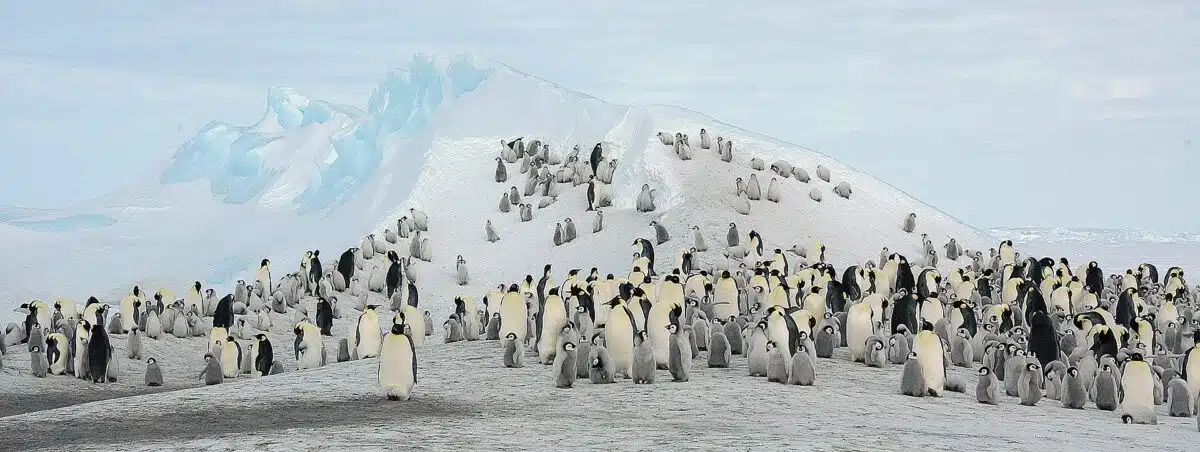Penguins, flightless pelagic birds found in the Southern Hemisphere, range from species inhabiting cold Antarctic and subantarctic areas to those found near the equator. There are 18 recognized species of penguins distributed across 6 genera. Distinguished by their characteristic upright posture and black and white feathers, these birds are remarkably adapted to thrive in aquatic environments. Their wings have evolved into flippers, making them excellent swimmers but incapable of flight.
Penguins are long-lived, with some individuals living up to 25-30 years in captivity. They reach sexual maturity around 3 to 5 years of age and are generally monogamous, with some species forming lifelong pair bonds. Most species lay a clutch of two eggs, with various nesting types, including under rocks, in burrows, or in shallow scrapes. Incubation periods range from 37 to 67 days, depending on the species. They feed primarily on fish, squid, and krill, and their foraging and breeding behaviors are closely tied to their environment. Conservation efforts are crucial for protecting these unique birds, as several species are under threat of extinction due to environmental changes and human activities.
The Emperor Penguin (Aptenodytes forsteri)
The Emperor Penguin is the tallest and heaviest of all living penguin species. They are endemic to Antarctica. They reach about 100 cm (39 inches) in length and weigh between 22 and 45 kg (49 and 99 lb). Some members can grow up to approximately 130 cm (about 50 inches) long and weigh 25 to 45 kg (55 to 100 pounds). The IUCN status for the emperor penguin is near threatened, with concerns about declining food availability, habitat destruction, and impacts of climate change. They are capable of diving to depths of approximately 500 meters (1,640 feet), making them the world’s deepest-diving birds.
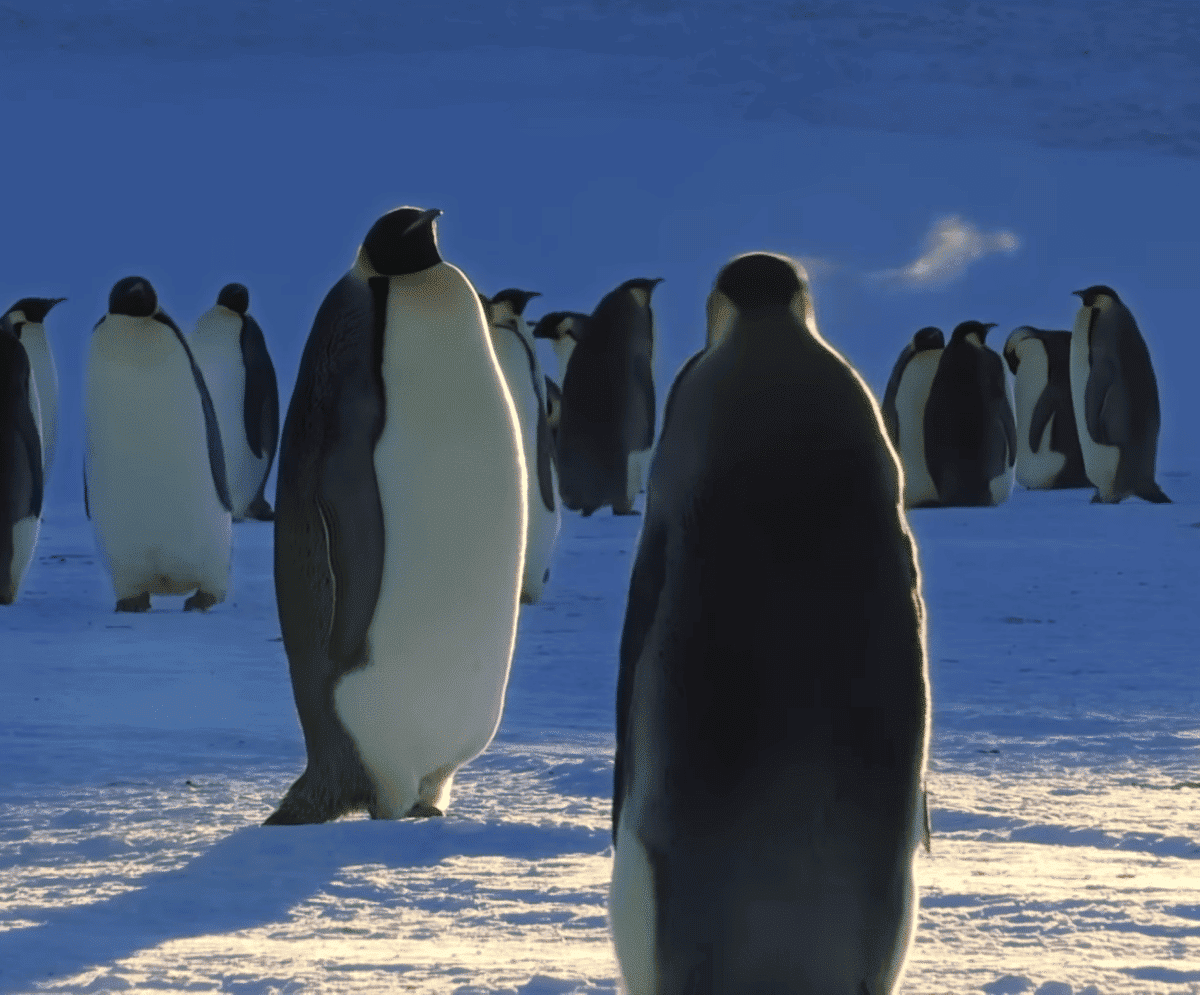
The King Penguin (Aptenodytes patagonicus)
The second largest species of penguin, the king penguin, is characterized by its dignified posture, vivid coloration, and long bill. They are approximately 85-95 cm (33–37 inches) in length and weigh between 14–17 kg (about 31–37 pounds), with males being slightly heavier than females. Listed as Least Concern, King Penguins have a growing population between one million and two million breeding pairs worldwide. They are found on several Antarctic and subantarctic islands, with breeding populations on South Georgia, the Falkland Islands, the South Sandwich Islands, the Crozet Islands, the Kerguelen Islands, the Prince Edward Islands, Heard Island, McDonald Islands, and Macquarie Island.
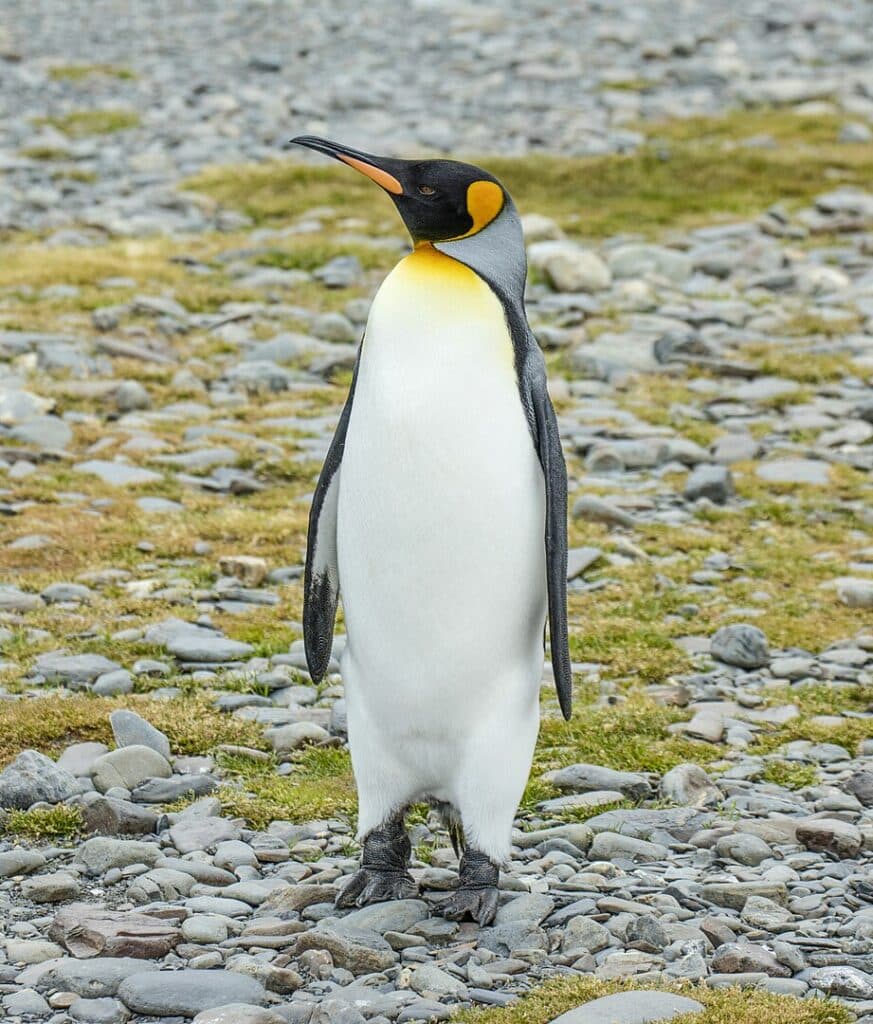
Gentoo Penguin (Pygoscelis papua)
The Gentoo Penguin is the third largest penguin species, known for its distinctive white stripe extending like a bonnet across the top of its head. Found on the Antarctic Peninsula and numerous sub-Antarctic islands, they measure about 76 to 81 cm (30 to 32 inches) in height and weigh between 4.9 to 8.5 kg (11 to 19 lb). These penguins are recognized for their fast swimming abilities, reaching speeds of up to 36 km/h (22 mph). The IUCN lists them as Near Threatened, primarily due to habitat disturbance and climate change impacts.
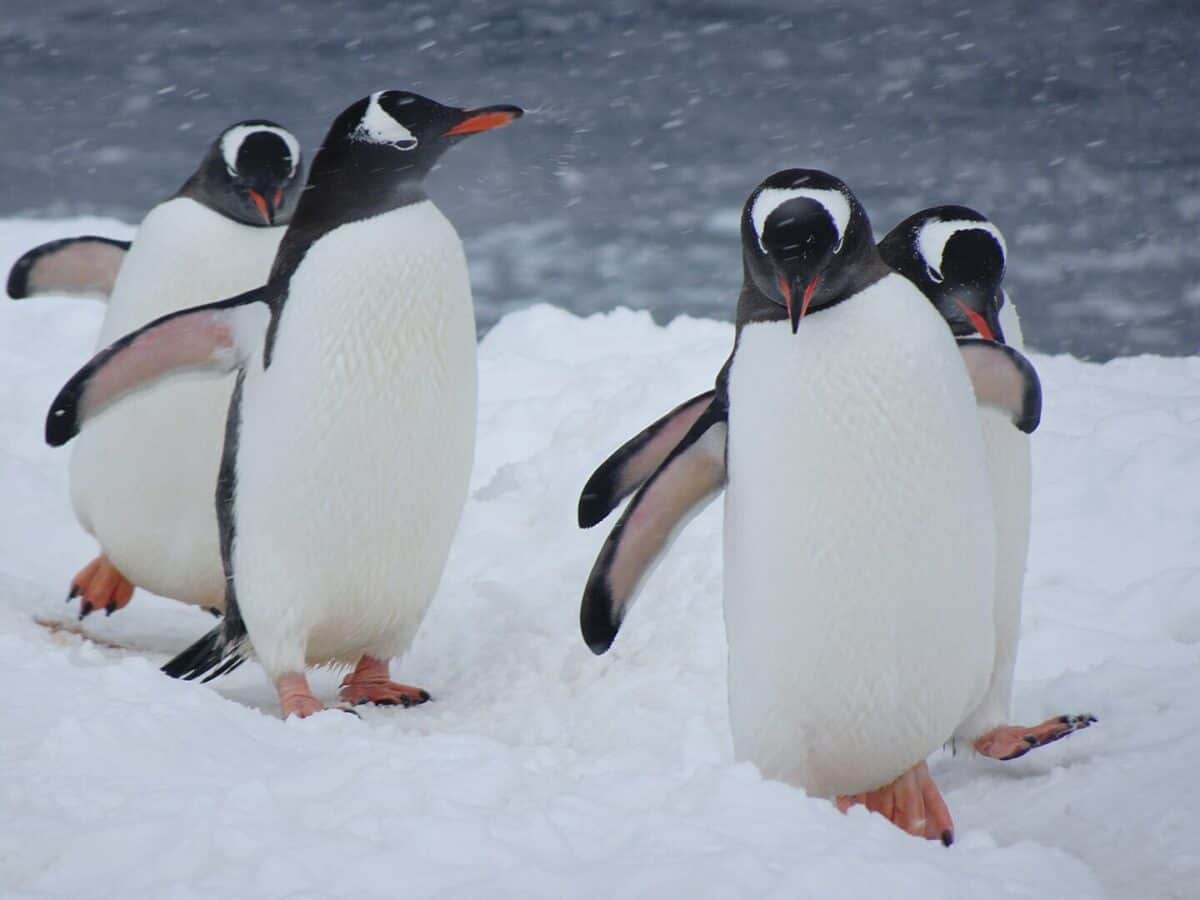
Adelie Penguin (Pygoscelis adeliae)
The Adelie Penguin, the fourth largest penguin species, is distinguished by its black head and back and completely white belly. It inhabits the Antarctic coastline and nearby islands. Adults stand about 46 to 71 cm (18 to 28 inches) tall and weigh 3.6 to 6 kg (8 to 13 lb). They are known for their strong adaptability to cold environments but face threats from climate change and sea ice changes. The IUCN currently lists them as Near Threatened.
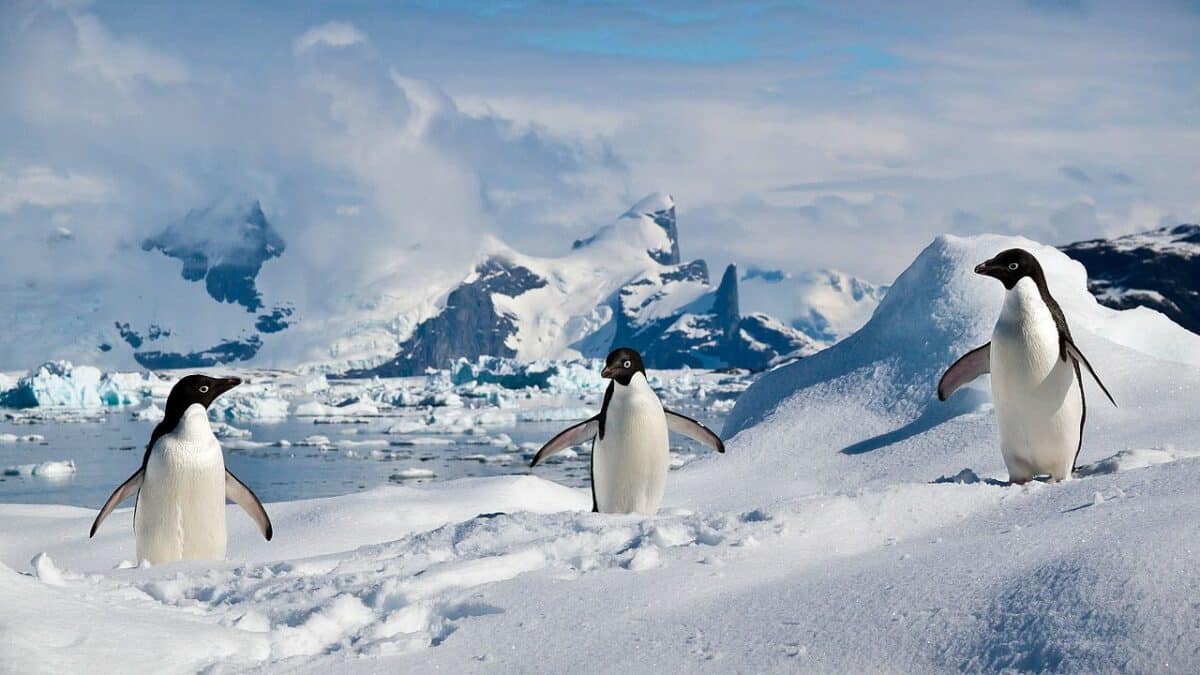
Chinstrap Penguin (Pygoscelis antarcticus)
The Chinstrap Penguin, the fifth largest of the penguin species, is easily recognized by the narrow black band under its head. Found on islands of the Antarctic Ocean, these penguins stand around 68 cm (27 inches) tall and weigh between 3 to 5 kg (6.6 to 11 lb). Despite their large population, they face threats from climate change. They are currently listed as Least Concern by the IUCN.
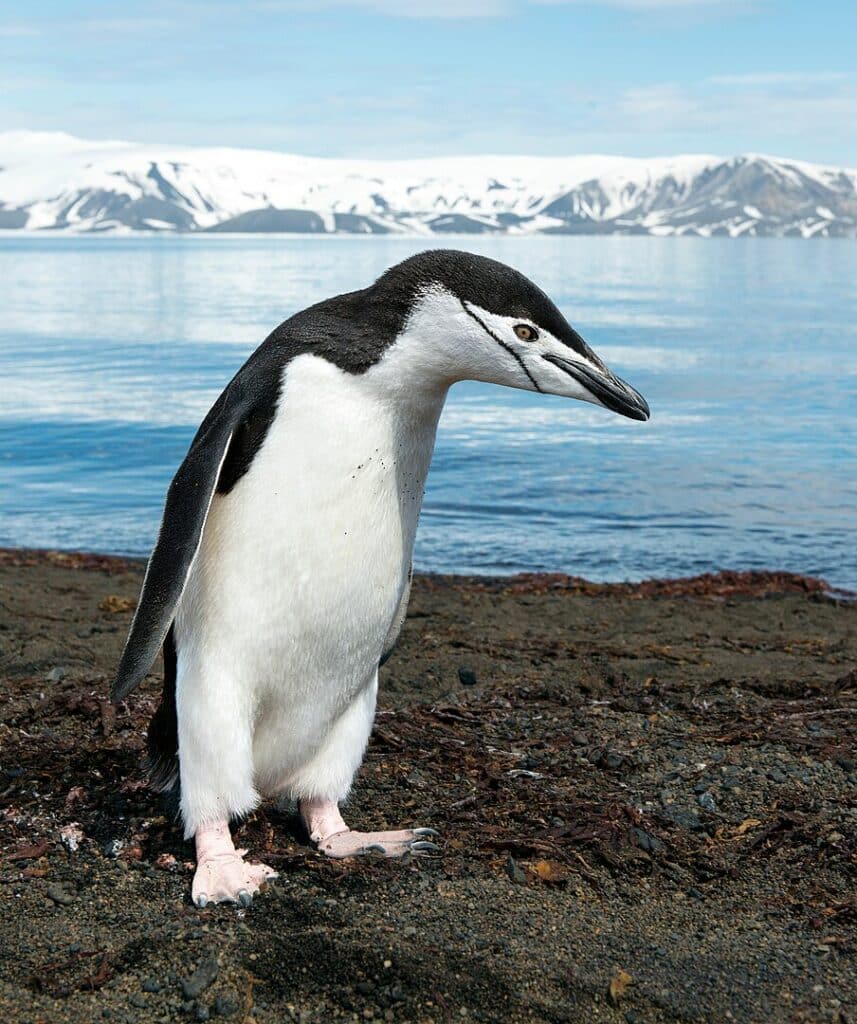
Macaroni Penguin (Eudyptes chrysolophus)
The Macaroni Penguin is the sixth largest species, known for its distinctive yellow-orange plumes above the eyes. Inhabiting the Subantarctic regions, they grow to about 70 cm (28 inches) tall, weighing between 3.5 to 6.4 kg (7.7 to 14 lb). They are listed as Vulnerable by the IUCN, facing threats from climate change, fishing, and habitat disturbance.
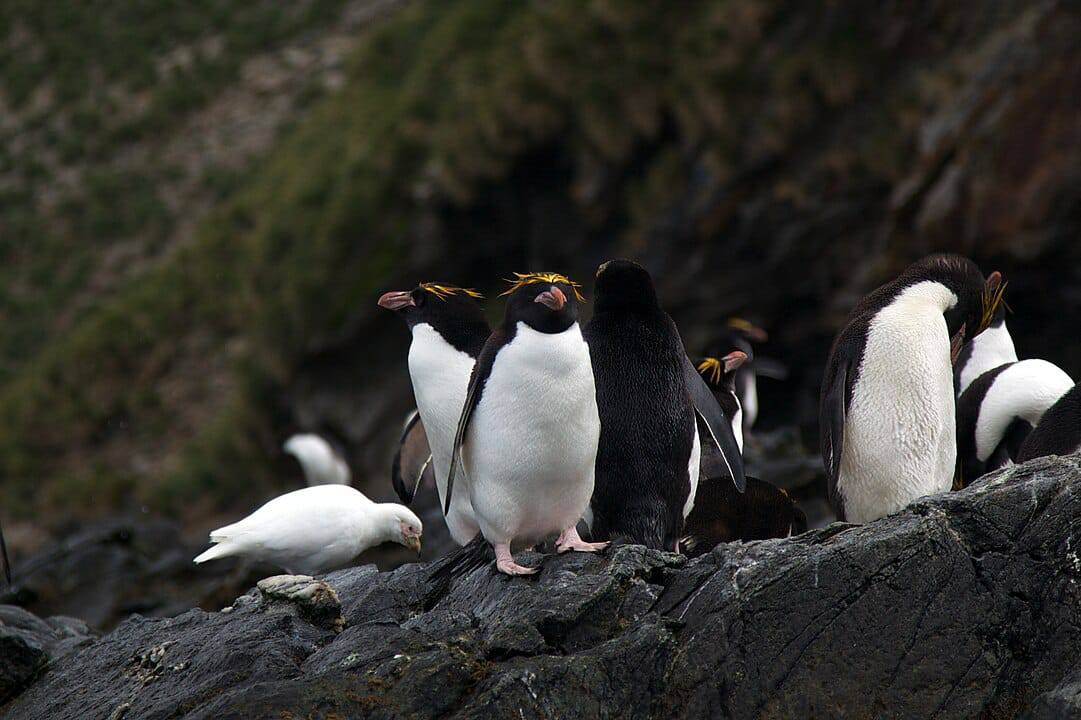
Royal Penguin (Eudyptes schlegeli)
Similar in size to the Macaroni Penguin, the Royal Penguin is unique for its white or pale grey face. They are found exclusively on Macquarie Island and nearby islets. These penguins grow up to 70 cm (28 inches) in height and weigh between 3 to 8 kg (6.6 to 18 lb). Listed as Near Threatened by the IUCN, their major threats include oil spills and climate change.
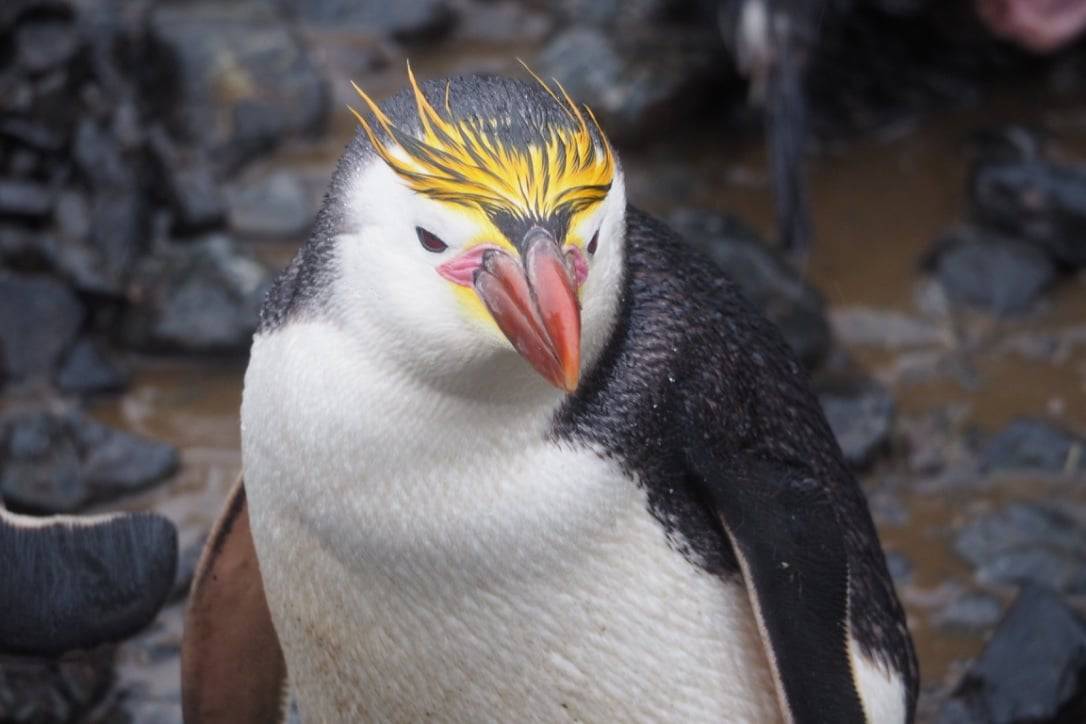
Fiordland Penguin (Eudyptes pachyrhynchus)
Slightly smaller than the Macaroni and Royal Penguins, the Fiordland Penguin is known for its broad yellow eyebrow-stripes and unique breeding behavior. They are native to the rainforests of New Zealand’s Fiordland and Stewart Island. Adults are about 60 cm (24 inches) tall and weigh approximately 3 to 6 kg (6.6 to 13 lb). Their IUCN status is Vulnerable, mainly due to predation by introduced species and habitat loss.
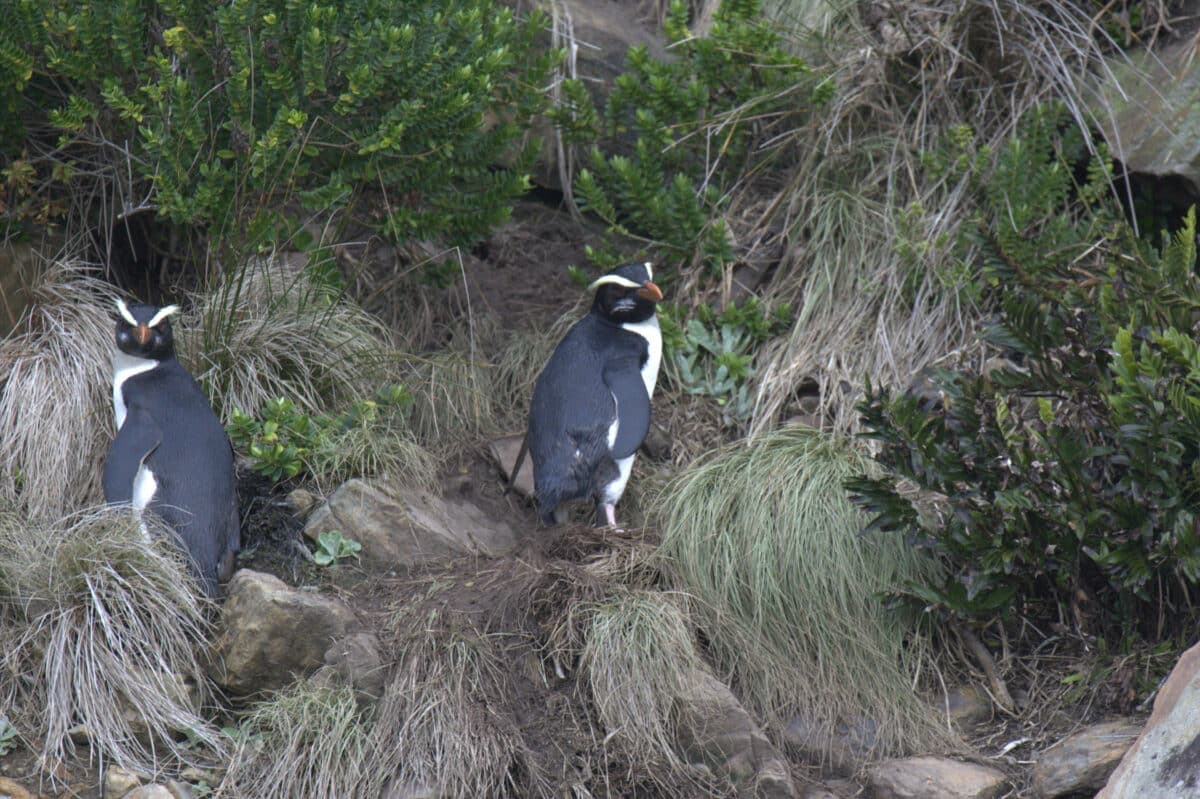
Snares Penguin (Eudyptes robustus)
The Snares Penguin, similar in size to the Fiordland Penguin, is exclusive to the Snares Islands south of New Zealand. They stand about 50 to 70 cm (20 to 28 inches) tall and weigh around 2.5 to 4 kg (5.5 to 8.8 lb). These penguins, known for their loud calls and sociable nature, are considered Vulnerable by the IUCN due to their limited range and susceptibility to environmental changes.
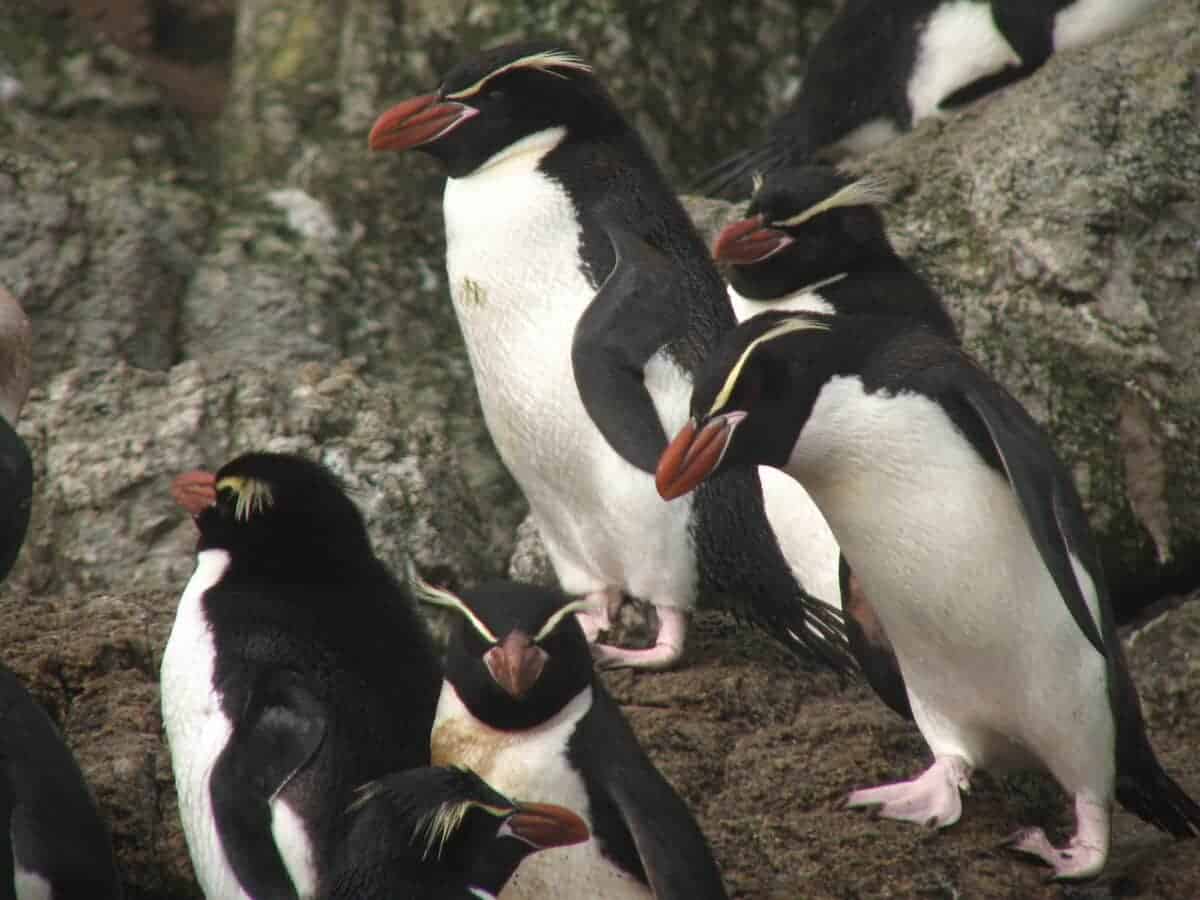
Erect-crested Penguin (Eudyptes sclateri)
The Erect-crested Penguin, similar in size to the Snares Penguin, is distinguished by its erect yellow crest. They breed on the Bounty and Antipodes Islands and are around 50 to 70 cm (20 to 28 inches) tall, weighing between 2.5 to 6 kg (5.5 to 13 lb). The IUCN lists them as Endangered, with threats including climate change and fishing bycatch.
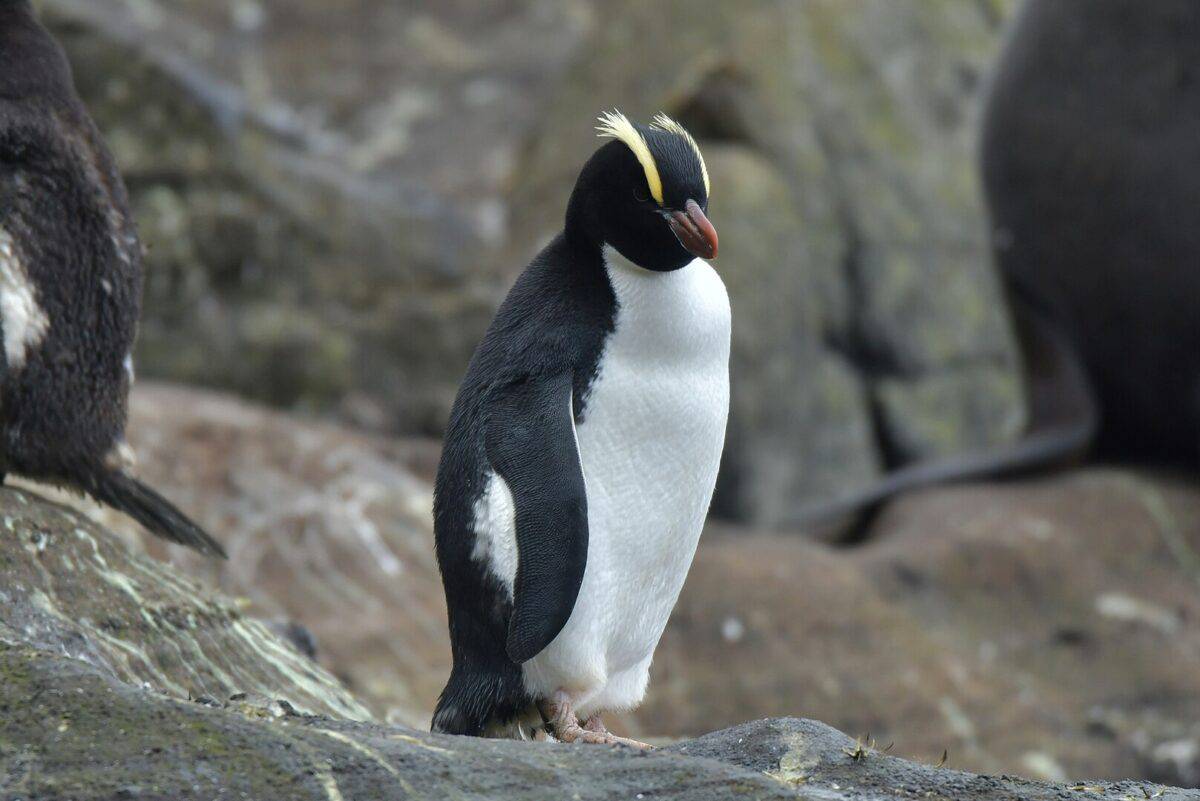
Southern Rockhopper Penguin (Eudyptes chrysocome)
Smaller than the Erect-crested Penguin, the Southern Rockhopper Penguin is known for its distinctive crest and red eyes. They inhabit rocky shorelines in the southern Atlantic and Indian Oceans. Adults measure about 45 to 58 cm (18 to 23 inches) in height and weigh between 2 to 3.4 kg (4.4 to 7.5 lb). They are listed as Vulnerable by the IUCN due to habitat loss and climate change impacts.
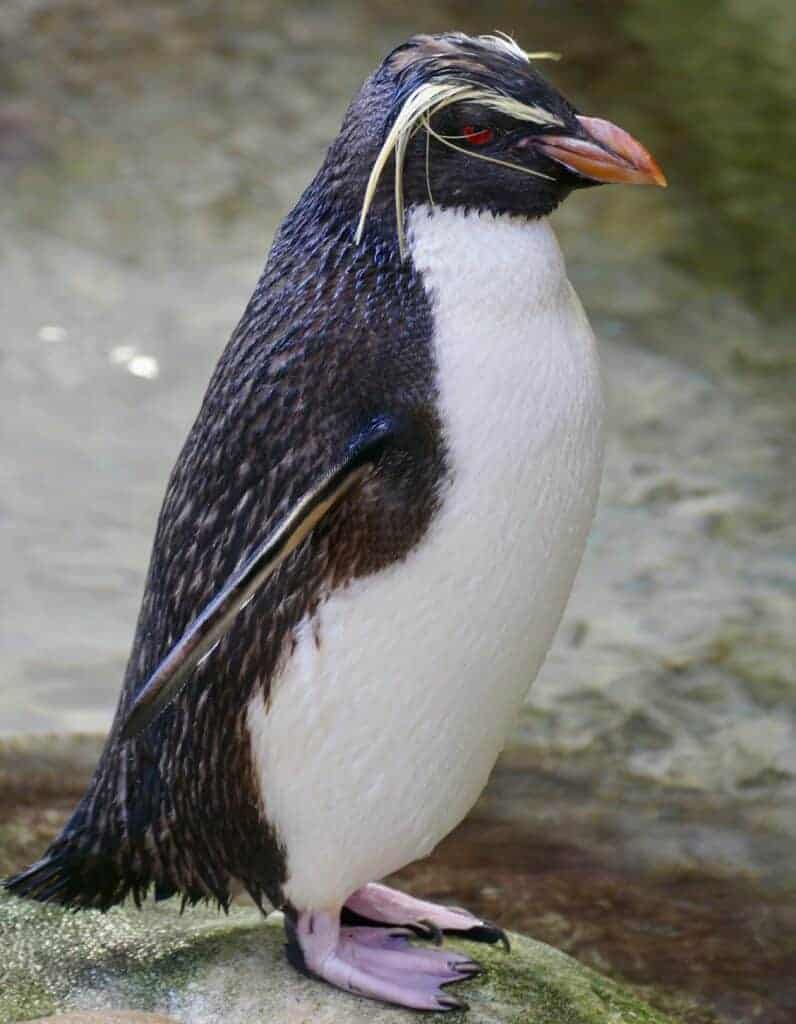
Northern Rockhopper Penguin (Eudyptes moseleyi)
Similar in size to the Southern Rockhopper Penguin, the Northern Rockhopper is noted for its longer crest and distinctive breeding behaviors. Found on the Tristan da Cunha and Gough Islands, they stand about 45 to 58 cm (18 to 23 inches) tall and weigh 2 to 3.4 kg (4.4 to 7.5 lb). The IUCN classifies them as Endangered, with threats including climate change, fishing, and oil spills.
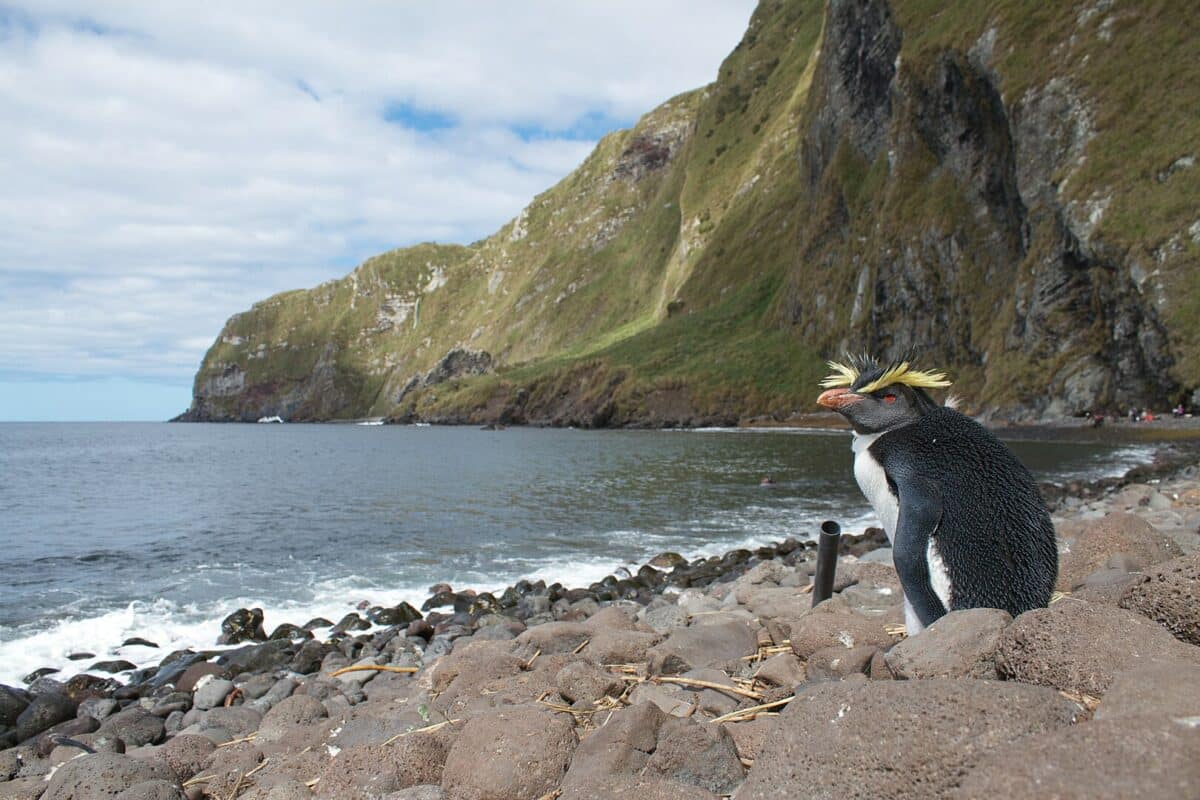
Yellow-eyed Penguin (Megadyptes antipodes)
Slightly smaller than the Rockhopper Penguins, the Yellow-eyed Penguin is distinguished by its pale yellow eyes and yellow head band. Native to New Zealand, they are one of the rarest penguin species. Adults can reach 62 to 79 cm (24 to 31 inches) in height and weigh 3 to 8 kg (6.6 to 18 lb). These penguins are known for their solitary nature and forested nesting sites. The IUCN lists them as Endangered, with threats including habitat destruction, predation by introduced species, and human disturbance.
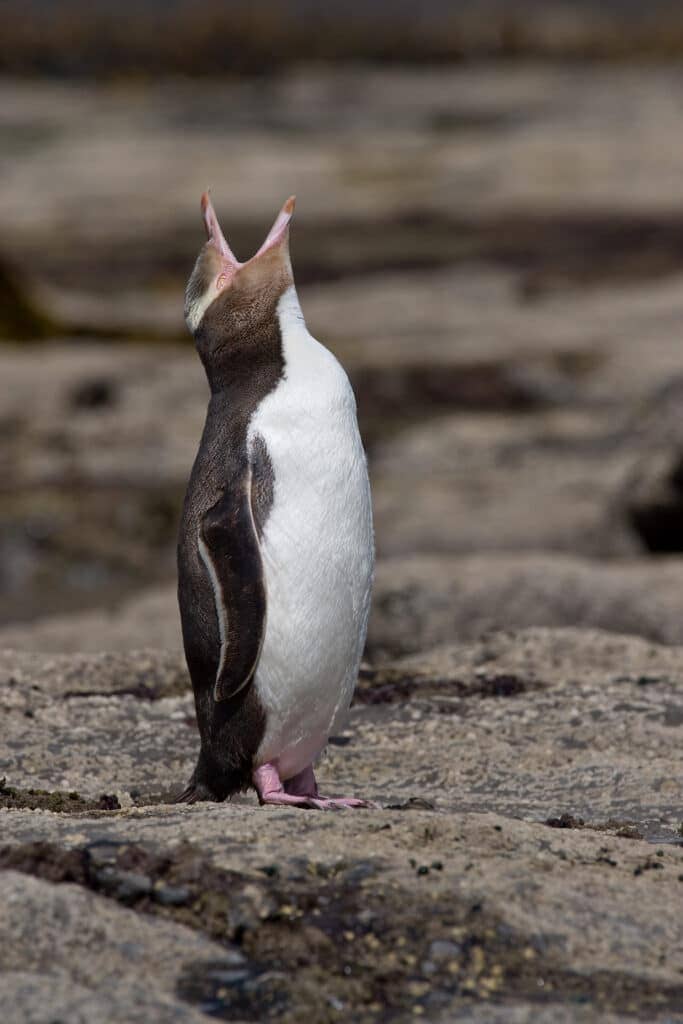
African Penguin (Spheniscus demersus)
Similar in size to the Yellow-eyed Penguin, the African Penguin is characterized by its black and white markings and a unique pattern of black spots. Found along the southwestern coast of Africa, they are the only penguin species that breeds in Africa. Adults grow to about 60 to 70 cm (24 to 28 inches) tall and weigh between 2.2 to 3.5 kg (4.9 to 7.7 lb). Their IUCN status is Endangered, with major threats including oil spills, overfishing, and climate change.
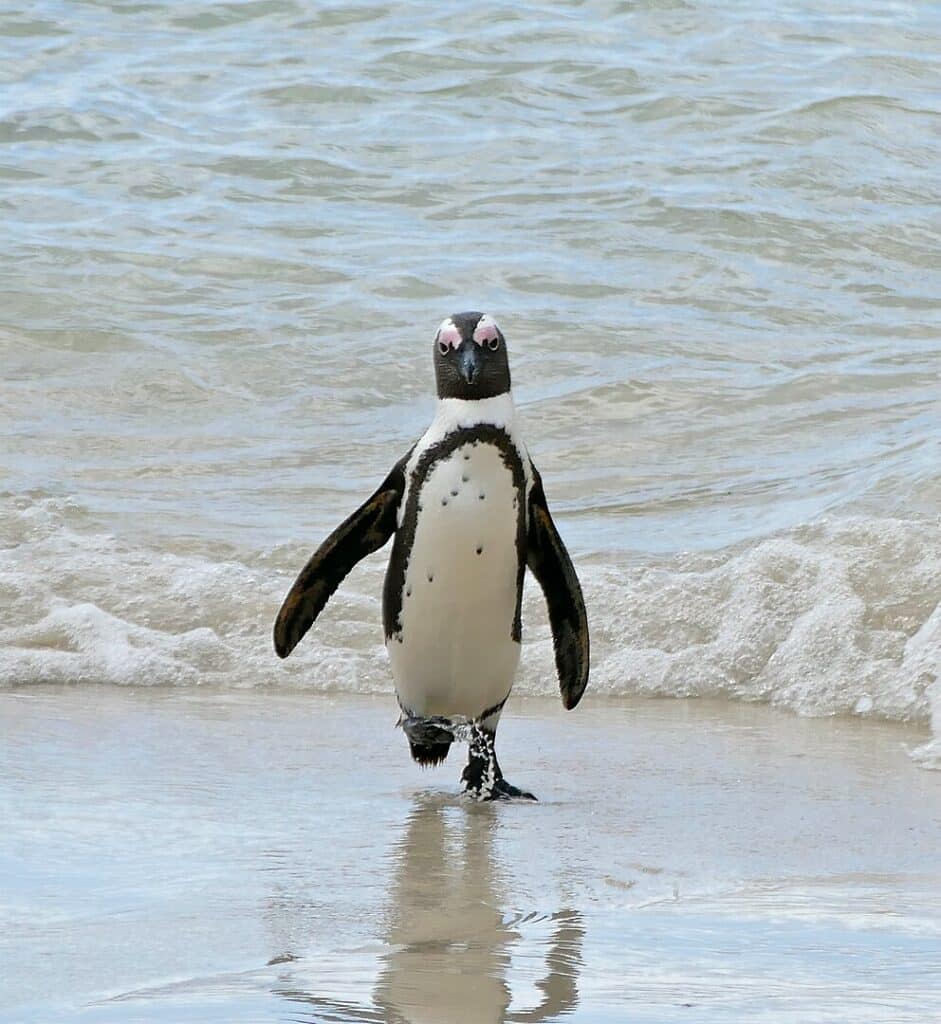
Humboldt Penguin (Spheniscus humboldti)
The Humboldt Penguin, similar in size to the African Penguin, is notable for its pink skin patch at the base of the bill. They inhabit the Pacific coasts of Peru and Chile. These penguins reach about 56 to 70 cm (22 to 28 inches) in height and weigh 3.6 to 5.9 kg (8 to 13 lb). They are listed as Vulnerable by the IUCN due to overfishing, climate change, and habitat disturbance.
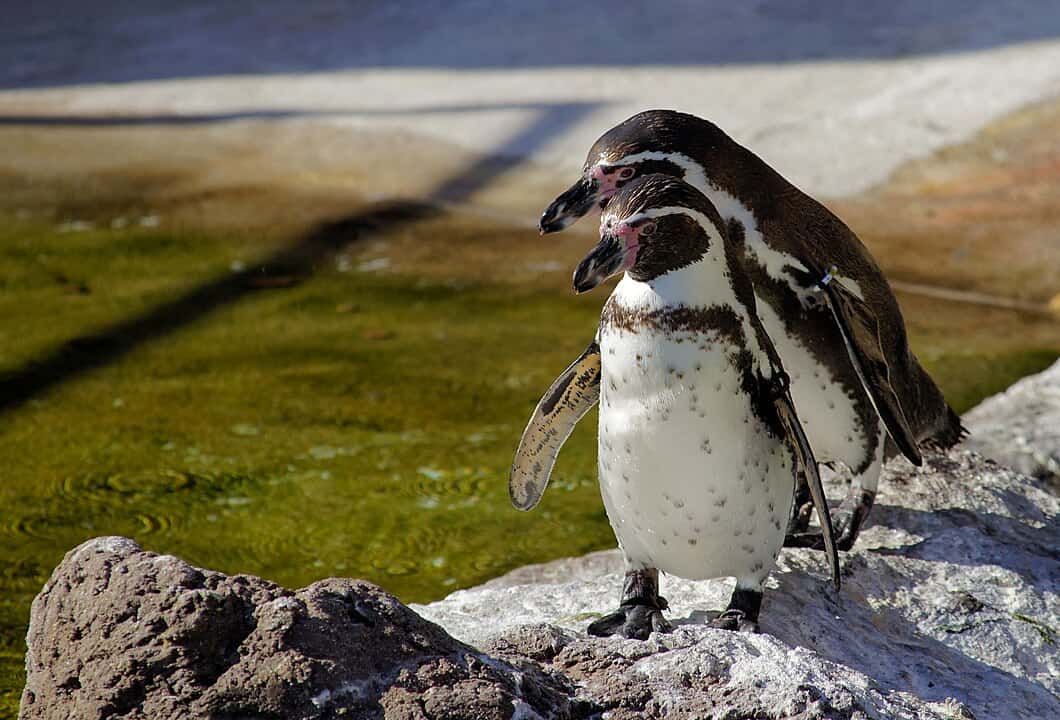
Magellanic Penguin (Spheniscus magellanicus)
Similar in size to the Humboldt Penguin, the Magellanic Penguin is recognized by its two black bands between the head and the breast. They are native to the coasts of Argentina, Chile, and the Falkland Islands. Adults stand around 60 to 75 cm (24 to 30 inches) tall and weigh 2.7 to 6.5 kg (6 to 14 lb). The IUCN classifies them as Near Threatened, facing threats from oil spills and climate change.
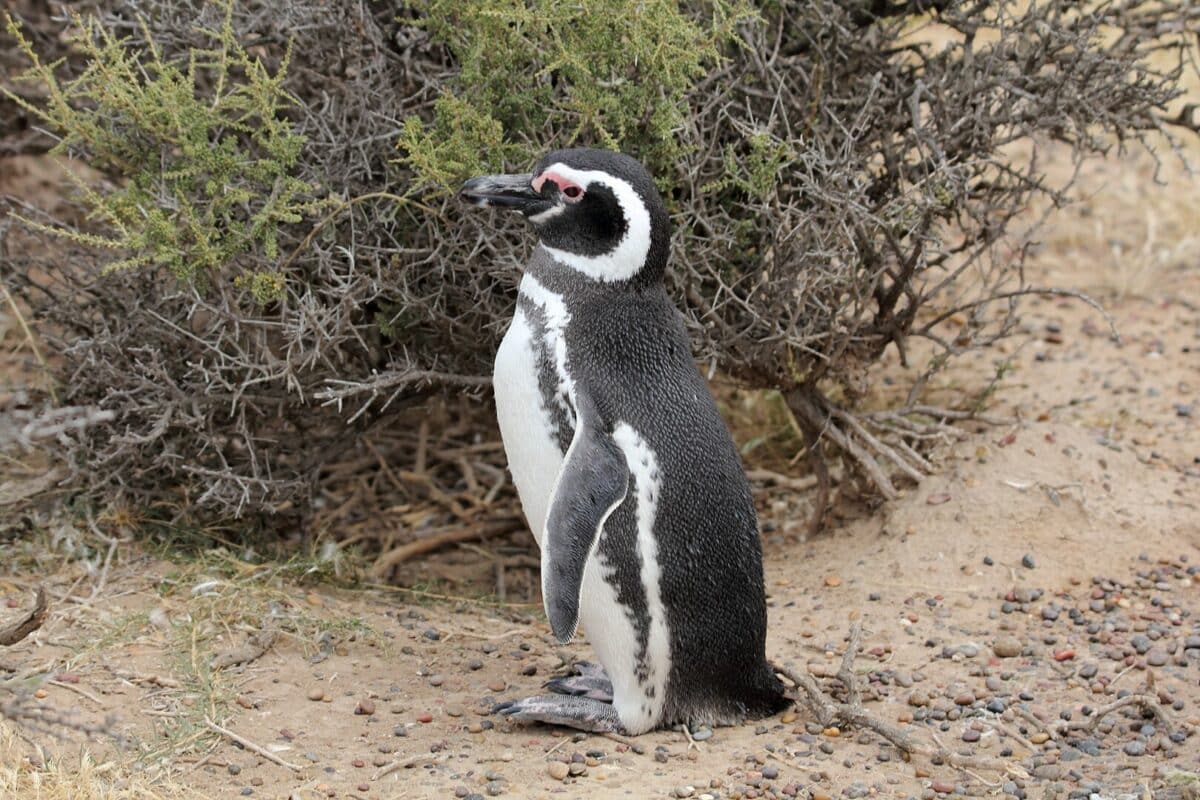
Galapagos Penguin (Spheniscus mendiculus)
One of the smaller penguin species, the Galapagos Penguin is unique for being the only penguin species found north of the equator. They inhabit the Galapagos Islands and measure about 49 cm (19 inches) in height, weighing approximately 2.5 to 4.5 kg (5.5 to 10 lb). The IUCN lists them as Endangered, with threats including El Niño events, predation by introduced species, and human disturbance.
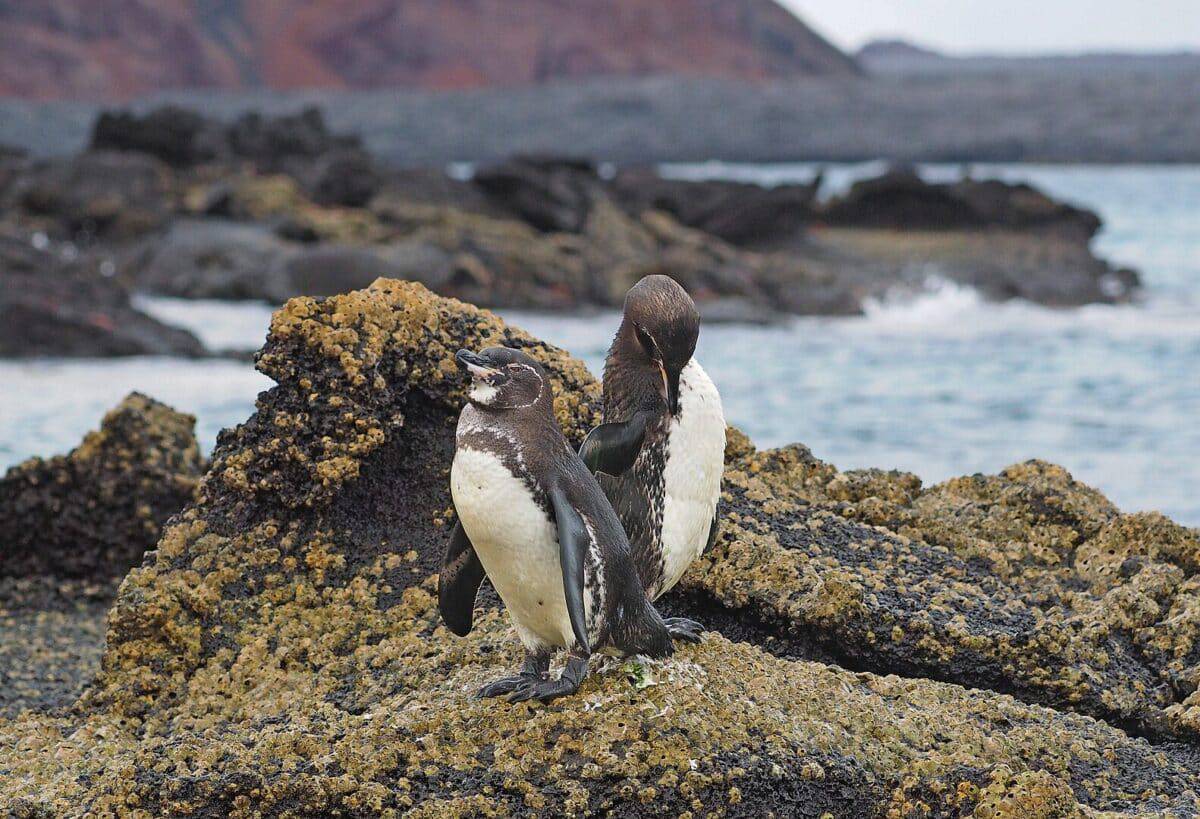
Little Penguin (Eudyptula minor)
The Little Penguin, also known as the Fairy Penguin, is the smallest penguin species in the world. Native primarily to coastal southern Australia and New Zealand, Little Penguins are characterized by their slate-blue to navy feathering, white bellies, and a distinct size, measuring about 33 cm (13 inches) in height and weighing roughly 1 to 1.5 kg (2.2 to 3.3 lbs). Their unique coloration, featuring slate-blue backs and wings, sets them apart from other penguin species, which typically have black and white plumage. These birds are primarily nocturnal on land and are known for their distinctive “parade” behavior, where groups waddle in line from the sea to their burrows at dusk. The IUCN lists the Little Penguin as a species of least concern, but they face threats from habitat loss, pollution, and predation by introduced species. Their diet mainly consists of small fish and squid hunting in shallow coastal waters.
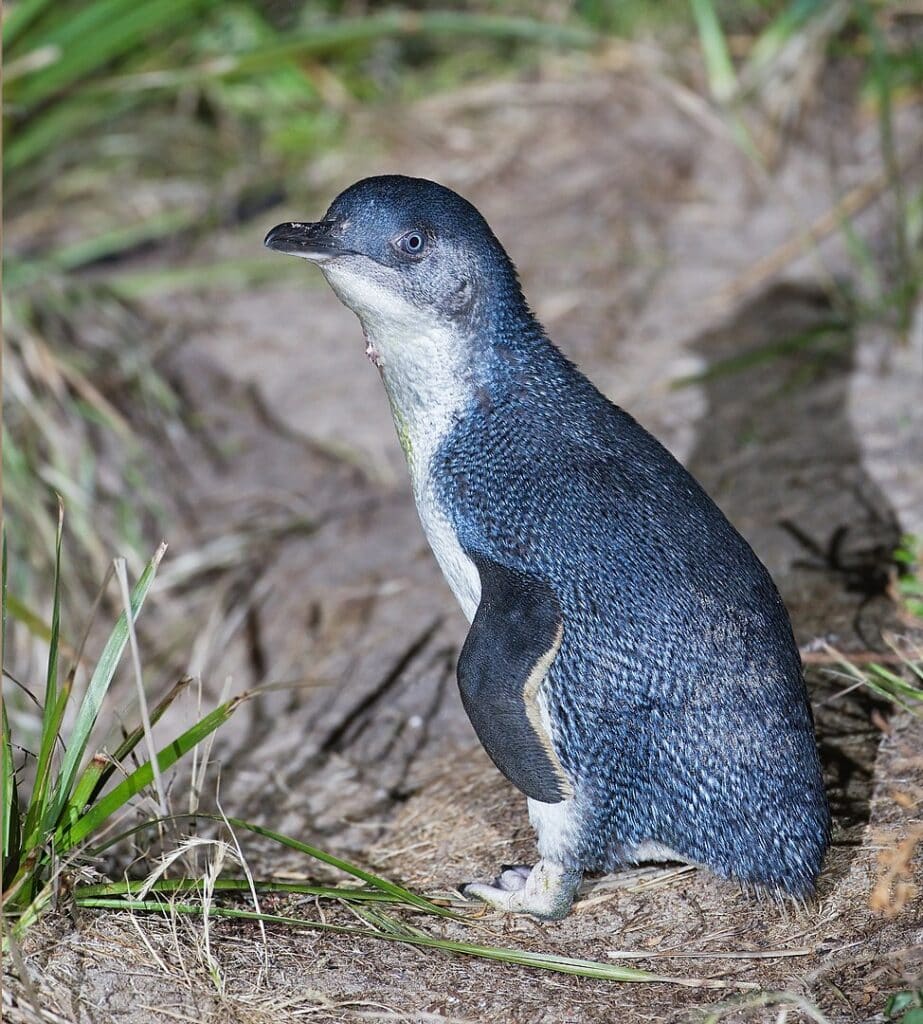
You might also enjoy:
Photographer Captures Touching Scene of Two Widowed Penguins Admiring Melbourne’s Skyline
🐧 Did You Know? Nesting Penguins Nap Almost 10,000 Times a Day!
BBC Breaks Rules To Rescue Helpless Penguins
Join our Forum for free today!

- The Bond Between a Wild Baby Bison and Her Rescuer - July 20, 2024
- An Excited Husky’s First Ever Time in Snow - July 20, 2024
- Top 20 Colorful Species To Brighten Your Day - July 14, 2024

